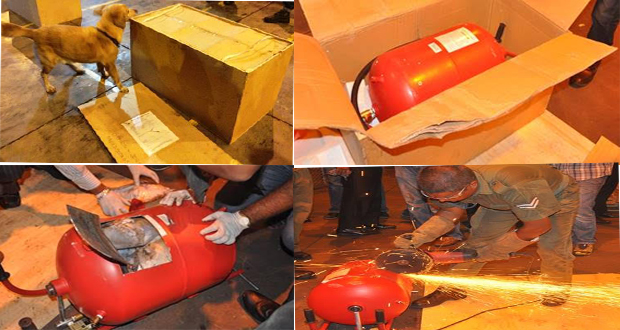Publicité
The missing exhibits: have the drugs really disappeared in the Kistnah case?
Par
Partager cet article
The missing exhibits: have the drugs really disappeared in the Kistnah case?

Since 1992, I have been in contact with the Anti-Drug & Smuggling Unit (ADSU) officers all around the island, in my capacity as Barrister appearing for clients arrested for a plethora of different offences, under The Dangerous Drugs Act. The system of sealing-weighing-safe custody- removing of drugs from ADSU Headquarters, for testing, and the transferring of the exhibits from the Forensic Science Laboratory back to the ADSU Headquarters have constantly been improved and monitored. I have studied very closely all missing links in the chain of custody in quite a number of ADSU cases so as to prepare the defence of the accused. In the case of Navind Kistnah, there is definitely no missing links.
Section 58 of the Dangerous Drugs Act 1984 is very clear. They are not mere guidelines but are mandatory steps that must be followed by any person who effects seizure under the Act. For sake of clarity, I reproduce in toto section 58 of the Dangerous Drugs Act 2000:
“I pray that the ‘history of missing kilos’ is not a tool which is being used to discredit some officers, as we are on the eve to have a new Commissioner of Police and other high ranking police officers!”
<p> </p>
Section 58: Conservation and sample-taking 1. (a) Any person who effects a seizure under section 5 or 51 shall –
as soon as they are discovered, place any drugs under seal in the presence of the accused, or if that is impossible, in the presence of two witnesses;
secure the drugs and other items of evidentiary value in such manner as to prevent their fraudulent removal;
number each sealed item and keep it in a place of safety in police custody;
write on its wrapping or on a label affixed thereon the description of the dangerous drugs that it contains, together with an indication of their nature and weight, as well as, where appropriate, the number of the packages in which the dangerous drugs are contained.
(b) Any such person shall immediately draw up and sign a written report which shall –
(i) mention the date, place and circumstances of the discovery,
(ii) describe the dangerous drugs seized;
(iii) specify their weight; give the number of evidentiary items prepared; and state the place at which the evidentiary items will be deposited.
(c) The items of evidentiary value shall be stored in appropriate conditions for the prevention of theft and other forms of misappropriation, as well as of accident and deterioration.
(d) Any subsequent movement of the evidentiary items shall require the preparation of a written report describing it, specifying its purpose and stating either that the evidentiary items and wrappings are unbroken and that their number corresponds to that indicated in the report on the seizure, or that evidentiary items have disappeared or deteriorated and the changes that they have undergone.
(2) If the police officer in charge of an investigation requires the report of an expert in order to determine the nature, composition and content of active principles in any dangerous drugs seized, he shall obtain it as soon as possible after the seizure in order to limit the risks of physical or chemical alteration.
(3) (a) Any dangerous drugs and other items of evidentiary value seized shall be kept in a place of safety in police custody until they are produced in Court.
(b) Where the dangerous drugs seized are not the subject matter of any prosecution, they shall be destroyed forthwith.
(c) The police officer in charge of carrying out the destruction shall certify in a written report that the dangerous drugs have been destroyed.
The ADSU officers, especially those who have been under the fire of cross examination during trials before Supreme Court, have mastered all the intricacies of section 58 of the Drugs Act.
The missing 16 kilos of drugs in the Kistnah case can easily be explained by the multi layered wrappings of the drugs, which were found inside red sand blasting pots made with the metal used to manufacture gas cylinders. The whole idea is to x-ray proof the safe passage of the drugs from South Africa to Mauritius.
The South African customs and Anti-Drugs units of South Africa will no doubt support that contention. The wrappings were done in a scientific way. Without the field work of South African intelligence service, I doubt if the blasting pots would have batted the eagle eyes of any experienced officer, be it customs or drugs unit. To note that among the wrappings there were solid plastic which are used in cold storage to preserve from low temperatures!
No need to have a Judge to check the missing 16 kilos! A reconstruction exercise with all the wrappings will remove any doubt… And will save taxpayers’ money without in the same vein sapping the morale of hard working ADSU officers. The Kistnah case was under public gaze since day one… Every high ranking officer of ADSU was following with gusto the unfolding of the case.
I pray that the “history of missing kilos” is not a tool which is being used to discredit some officers, as we are on the eve to have a new Commissioner of Police and other high ranking police officers!
Publicité
Publicité
Les plus récents






